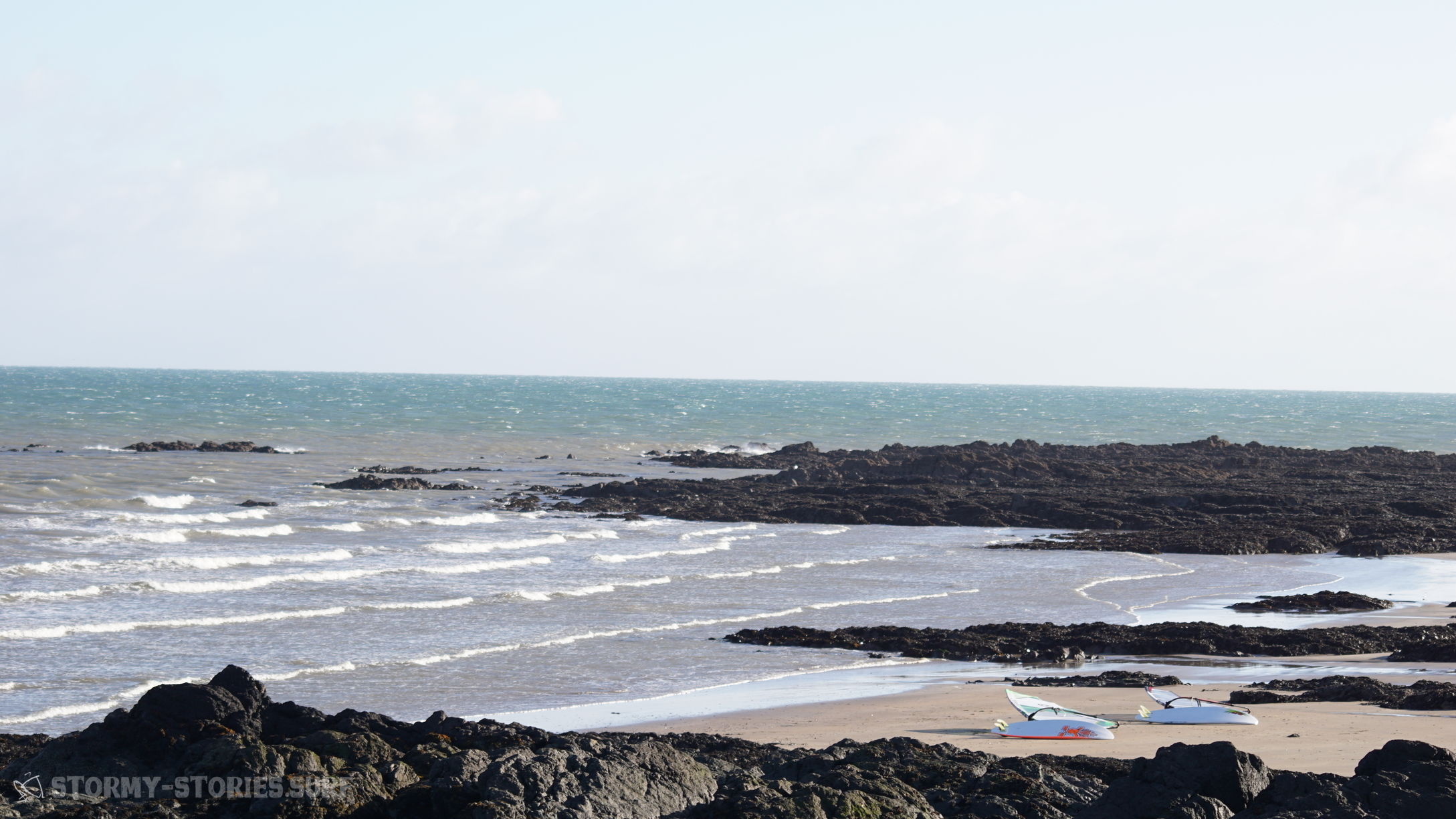We then headed south along the coast by car. However, all the windsurfing spots we had read about only offered underworldly conditions, so we were almost a little annoyed that we hadn’t stayed longer in Magheroarty. The wind direction here would also have been very bad, but at least it might have been windsurfable.
But then we found a headland at the end of a bay which, with a bit of luck, would no longer be covered by the wind. There was no road to it, as this stretch of coast seemed to have been taken over by a “mobile home park”. So, armed with an anemometer and warm jackets, we walked over a few rocks and finally reached a nice little sandy beach. From the beach, more rocks jutted out into the sea and on the horizon a large, green overgrown island grew out of the water, giving the place a certain charm. Behind us, the beach merged into a small, steep cliff a few meters high, at the end of which stood the mobile homes, whose windows probably offered a fantastic view of the sea.

Leave a Reply